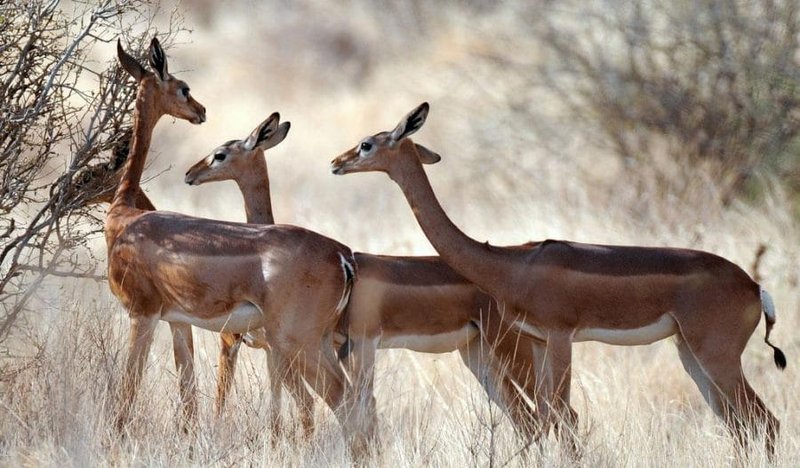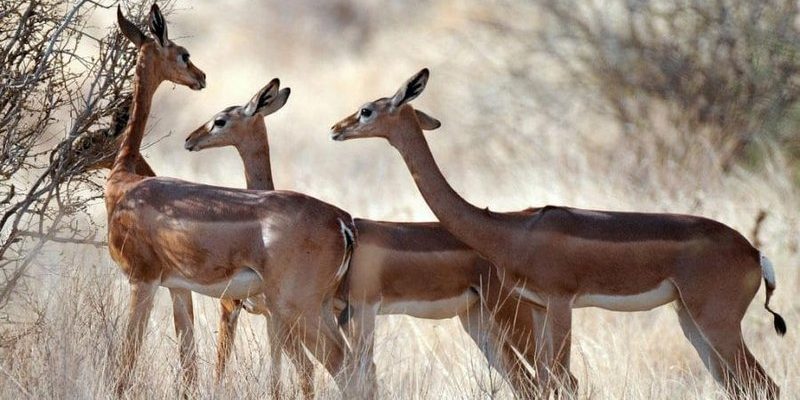
To understand the habitat and distribution of gerenuks, let’s take a closer look at the regions they inhabit and the specific environmental conditions they prefer. Think of it like exploring a map of their favorite places—a journey through their natural world. So, grab a cup of coffee, and let’s delve into the intriguing life of the gerenuk!
Natural Habitat of the Gerenuk
Gerenuks primarily thrive in arid and semi-arid regions of East Africa. These animals are particularly suited to the dry habitats found in countries like Kenya, Somalia, and parts of Ethiopia. You might wonder, why such dry places? Well, gerenuks have adapted beautifully to these environments, showcasing traits that help them survive where water sources are scarce.
They favor open savannas, bushlands, and scrub areas. Imagine vast grasslands with scattered bushes—this is the landscape where you can often spot them gracefully navigating through the foliage. The reason they love these areas is twofold: first, they have ample food options, and second, it provides them with plenty of cover from potential predators.
Feeding Habits and Their Influence on Habitat
Gerenuks are known for their unique feeding habits, primarily browsing on leaves, flowers, and shrubs. Their long necks give them a distinct advantage, allowing them to reach vegetation that many other herbivores can’t. This ability leads them to choose habitats with a mix of tall shrubs and smaller trees where they can find nutritious shoots and leaves.
However, they don’t just eat anything. They are selective grazers, meaning they prefer certain plants over others. This choice can significantly impact their habitats as they often deplete certain food sources in specific areas, influencing their movements and distribution within their environment.
Geographical Distribution
The geographical distribution of gerenuks is quite specific. These animals are primarily found in the eastern parts of Africa, which can be quite fascinating when you think about how such a unique species has carved out a niche in that particular region.
For instance, in Kenya, you can spot gerenuks mostly in the northeastern region, particularly in national parks like Samburu and Meru. The dry landscape of these parks provides the perfect combination of food and shelter. Their preference for certain terrains means they often exist in pockets rather than across vast areas, making them somewhat localized in their distribution.
Impact of Climate on Distribution
Here’s the thing: climate plays a huge role in where gerenuks can thrive. They require habitats that are not just dry but also have a stable climate. Extreme changes in weather, such as prolonged rains or droughts, can influence their movements. If one area becomes too wet, they might migrate to drier regions where food sources are still available.
This adaptability is crucial for their survival. When faced with habitat changes due to climate variations, gerenuks can often relocate to stay close to their preferred food sources. This movement can also affect their interaction with other species, both predator and prey.
Conservation Status and Challenges
Unfortunately, the gerenuk faces several challenges that threaten its habitat and distribution. Human activities, like agriculture and urban development, often encroach on their natural habitats. As land is transformed for farming or settlements, gerenuks find it harder to access the food and cover they need to survive.
Additionally, poaching is a significant concern. Though not as heavily targeted as some other species, they are still hunted for their meat and skin in certain areas. This illegal hunting can lead to localized declines in their populations, which is troubling given their specific habitat requirements.
Conservation Efforts
To combat these challenges, various conservation efforts are underway. For example, protected areas like national parks serve as sanctuaries for gerenuks, providing them with the safe environments they need. Organizations are also working to educate local communities about the importance of preserving these unique animals and their habitats.
By creating awareness and promoting sustainable practices, conservationists hope to ensure that gerenuks can continue to thrive in their natural habitats. Supporting these efforts is essential for maintaining the delicate balance of ecosystems in which these beautiful creatures play a crucial role.
In summary, gerenuks inhabit distinct regions of East Africa, favoring dry, open landscapes with ample shrubbery. Their ability to thrive in these challenging environments highlights their unique adaptations and feeding habits. However, these fascinating animals are facing significant threats from human encroachment and climate changes.
Understanding where gerenuks live—and why—gives us insights into their behavior and the importance of conservation efforts. Protecting their natural habitats is vital for ensuring these incredible creatures continue to grace the African savannah. So, the next time you think about where gerenuks live, remember that their homes are more than just landscapes—they’re intricate ecosystems that need our attention and care.

